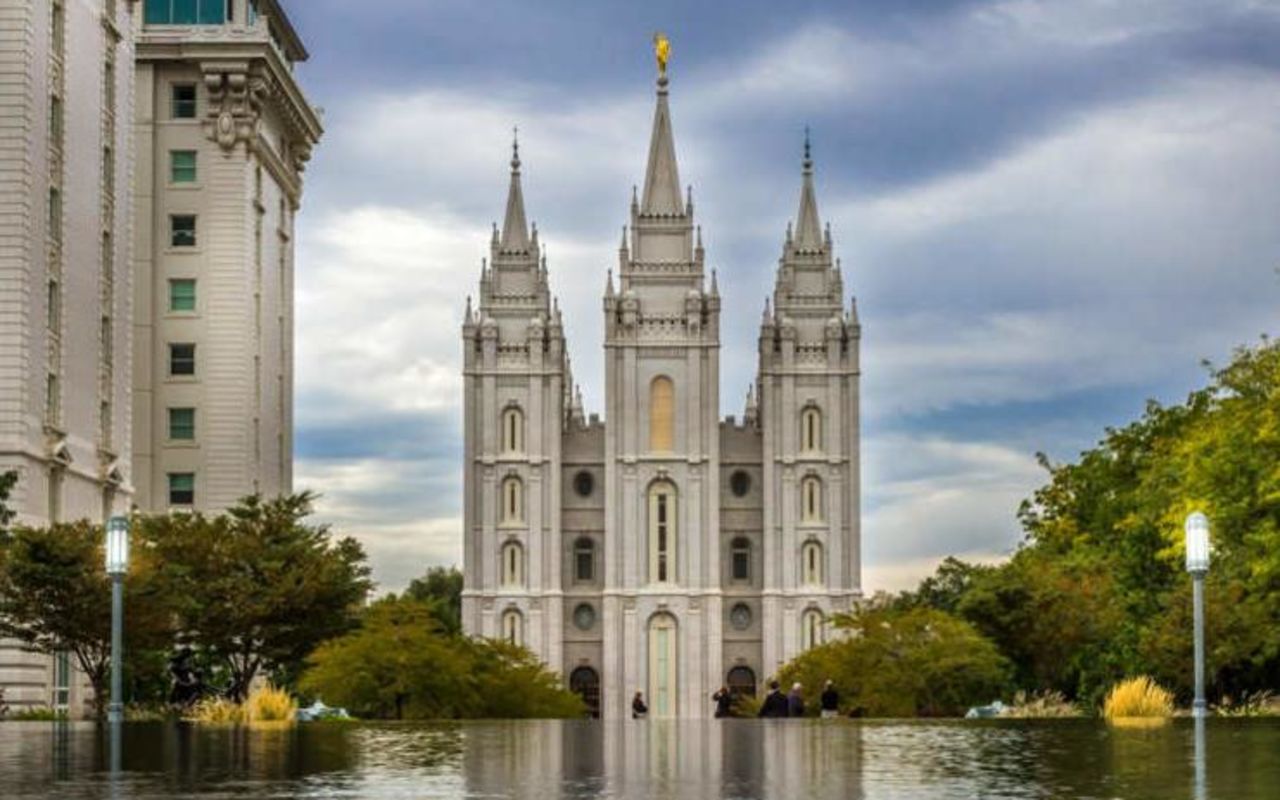Salt Lake Mormon History Sites
See Utah firsts: How early settlers lived and what they deemed important.
Ever since Brigham Young arrived in the Salt Lake Valley on July 24, 1847, the area has been developing not just as a city but as the headquarters of the Church of Jesus Christ of Latter-day Saints. Many of the church’s historical landmarks are located on Temple Square, but you’ll find other sites that were significant to the pioneers sprinkled across the valley, as well.
Mormon Trail Sites
Several points along the historic Mormon Trail — the path that pioneers followed from the east into the Salt Lake Valley — are marked and open to the public. The most notable is This Is the Place Heritage Park, where President Brigham Young declared, “This is the right place.” A 60-foot tall monument commemorates the day. Travel back to that period at Heritage Village. Volunteers clad in period clothing demonstrate what life in early Utah was like. You’ll experience pioneer-era shops, homes, school and activities.
Salt Lake Cemetery
The sprawling Salt Lake City Cemetery is located between N and U streets. At 122 acres, it’s the largest city-owned cemetery in the U.S. Twelve church presidents and dozens of other famous people are buried there, including inventors, suffragists and outlaws. The public is welcome to take a free, self-guided tour of the gravesites. The cemetery is open from 8 a.m. to 4:30 p.m. Monday-Friday.
Ensign Peak
Ensign Peak is a prominent hill just north of the Utah Capitol. On July 26, 1847, two days after arriving, President Brigham Young and seven other pioneer leaders climbed the hill to survey the Salt Lake Valley. From the summit — where you can see the entire valley — they began to plan the city. See the unparalleled view yourself. An 0.8-mile out and back trail is easy to follow, but it is rocky and fairly steep in places. Vista Mound, a lower viewpoint, is wheelchair accessible.
State Capitol
Utah’s Capitol building is located at 350 North Main Street, on a hill above downtown Salt Lake City. It was designed to resemble the U.S. Capitol in Washington, D.C. and is widely regarded as one of the nation's most attractive state buildings. The structure is classical in style, with support columns and a copper-clad dome. The interior is also impressive, boasting a large rotunda and marble staircases. Free guided tours are offered weekdays from 10 a.m. to 3 p.m.
Mormon Battalion Monument
On the southeast lawn of the Capitol, a granite and bronze monument honors members of the church who volunteered for the Mormon Battalion. Some 500 men joined the U.S. Army during the Mexican-American War, in an effort to show the government that church members were loyal citizens. They, along with a few women volunteers, walked from Illinois to California, foraging for food and water as they went to supplement their meager rations. The four-sided monument depicts the battalion’s brief history.
Council Hall
Directly south of the Capitol is Council Hall, which served as the government offices when Utah was only a territory. The stately red brick building — flanked by a colorful, life-size bison statue — now houses the Utah Office of Tourism. The upper floor has been restored to its original design, with Victorian-era styled furnishings. Take a tour, then pick up some Utah themed souvenirs in the gift shop.
Daughters of Utah Pioneers Museum
Quilts, guns, medical tools — they’re just part of the huge collection of pioneer artifacts at the Daughters of Utah Pioneers Museum. Located just west of the Capitol, 300 North Main Street, it has one of the finest collections of its kind in the Intermountain West. There’s a history department with pioneer documents and histories you can study, as well. Visit the museum Monday through Friday from 9 a.m. to 4:30 p.m. Admission is free.
LDS Hospital
Located on 8th Avenue between C and D Streets, this medical center was built in 1905 with donations from the church and W.H. Groves, who donated funds to purchase the land. When it opened its doors, it offered a nursing program as well as patient care. The hospital quickly expanded, and today there are more than 220 beds. The world’s first medical computer was developed at LDS Hospital in 1954. Intermountain Healthcare took over operations in 1974.
Pioneer Park
Located at 300 South and 300 West, Pioneer Park marks the site of the first pioneer campsite in Salt Lake City, and the first pioneer fort. Today, it features basketball and volleyball courts, a multi-use field and a playground. A pickleball court and more trees are planned. It is the only downtown park on the west side of the city. On Saturdays, in mid-June through October, it hosts the Downtown Farmers Market from 8 a.m. to 2 p.m.
Rio Grande Depot
Note: Building is temporarily closed for seismic retrofit.
The Rio Grande Depot was built in 1910 by the Denver Rio Grande and Western Railroad. The former train station now houses the Utah Historical Society Museum and Library, where you can see exhibits of early state history. Bribe the kids with a snack from the Rio Grande Cafe. The depot is located at 300 South and 300 West.
Welfare Square
Note: Tours are currently suspended due to Covid.
Built in 1938, Welfare Square is an epicenter for the church’s humanitarian efforts. On its campus there’s a 178-foot grain silo, a cannery, a bakery and a milk and cheese processing plant. There are also English classes for refugees and job training assistance, among other services. Free, one-hour tours are conducted Monday-Friday from 10 a.m. to 4 p.m. You may even get a sample of one of the foods produced there.
Salt Lake Mormon History Sites | Photo Gallery

Salt Lake Mormon History Sites